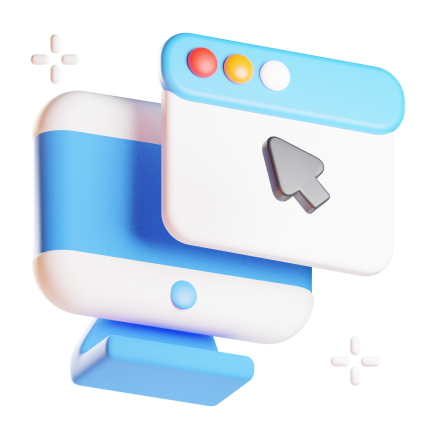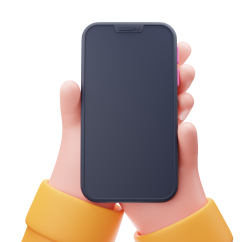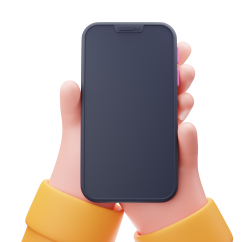Product Development Strategy for Building Successful Mobile Applications
- Custom software development
- Mobile app development
Our experienced team of UX/UI designers and developers will help you stand out with a beautifully designed UX/UI.
Product Development Roadmap for App Developers
1. Recognize the vision of your product.
Determine what you want to achieve with the new app first. Begin by responding to the questions below about your new product:- What is the point of making this app?
- What do we hope to accomplish?
- Why will users find the app useful?
- Why are we working on this app right now?
Our experienced team will help you stand out with a bespoke, flexible, and scalable software application for your business.
2. Develop a clear, customer-centric strategy.
By putting the end-user at the center of product development, you'll be able to see exactly what needs to be done to improve user experiences. Customer personas are a great way to put a face to your target audience and ensure that your app provides value to them and retains users over time.3. The value of app features and how they work
If your app aligns with your company's goals, starting an MVP can help you gather useful information from users before you spend too much time and money building it. Keep in mind that MVPs are just the starting point for your final product, and they should only include the most important goals and features. Always start with the most important features because you may need critical client feedback that will change the order of your feature list. Creating a master list of all the features the final product should include is an important component of creating a product roadmap and establishing the MVP's key goals. The MoSCoW (Must, Should, Could, and Won't) strategy can assist you in determining which features to build first and developing a plan to do so.4. Plan out your project's timeline.
Setting timeframes for your project will assist you in translating your strategic goal into actionable results. Having precise timetables for each stage of the project ensures that everyone is on the same page and that your finished app is ready when you want it.5. Proposed initiatives and activities
It's now time to implement your roadmap's strategy. User stories, which are short, self-contained pieces of development work meant to achieve a specific goal within the app, are the most effective method. Rather than focusing on how to build a specific feature, think about what a user wants to accomplish with your program. After that, work the features into the plot. In agile development, a product roadmap has much shorter timelines and requires more frequent updates to keep up with changes. User stories are extremely small pieces of the overall product that allow for more efficient scheduling and collaboration. As a result, user stories are well suited to agile methodology's sprint periods.Our experienced team of will help you stand out with a bespoke, flexible and scalable software application for your business.
6. Keep a running tally of your accomplishments.
Your project will stay on track if you keep track of your progress and the state of the app development process. Are you on track to meet your sprint development goals? Is the project still on track to be completed on time and on budget? Remember that having too many metrics can lead to confusion, so choose only actionable indicators relevant to your product roadmap's strategic direction.7. Metrics and measurement
After your app has been released, you can evaluate its success using a variety of methods. The following are examples of measurable metrics:- The total number of downloads for the app
- User feedback and testimonials
- Monthly income that is recurring
- Number of bugs reported by users, number of updates required, etc.
Common Mistakes in Mobile App Development
1. Not doing enough research and due diligence.
I've learned from supervising app development that users are naturally impatient. They want to get right to work without first taking the necessary precautions. If you fit this description, I admire your drive. You should, however, take your time and do your research before moving forward. Taking the time now to choose the best platform and solution for app development will save you months, if not years, of frustration in the future. Don't rush into choosing an app-building tool because it could make or break your project's success.Our experienced team of android developers will help you stand out with a efficient and fast mobile app for your business.
2. Poor Budget Management
Another common developer blunder that I see on a daily basis is going over budget. There are a number of reasons for this, the most important of which are as follows:- The budget was miscalculated from the start.
- Failure to plan for all aspects of the project.
- Unprecedented costs.
3. Failing to Create an MVP
Another common blunder made by app developers is rushing into the final stages of development. An MVP (minimum viable product) will help you test and evaluate your app's performance. During the MVP stage of development, the app will only have the essential features. An MVP isn't a beta version of your app. This is yet another example of a common app blunder.4. Poor User Interface/UX Design
We can get so wrapped up in the development process that we lose sight of how the software will be used. Taking the user interface of an app for granted is a costly mistake that must be avoided at all costs. A bad UI/UX design is one of the most common reasons for software uninstallation. People have certain expectations when they use an app for the first time. For example, follow the lead of the most successful and popular apps on the market today. These apps all have simple navigation, a search function, and a home menu that can be accessed from any screen. Developers sometimes try to be too creative with the user interface, which leads to a poor user experience.5. Failing to Test Properly
I mentioned testing briefly when we were discussing MVPs. However, you must take your testing to the next level to have a successful mobile app. Testing is an ongoing procedure that must be completed at all stages of the development process. It will not only improve the user experience, but it will also be the only way to resolve any program flaws or difficulties.Our experienced team of Flutter and React-native developers will help you stand out with an efficient and fast mobile app for your business.
6. Attempting to build for too many platforms
Depending on its goal, you may be tempted to make your app as widely available as possible. While this has benefits for mobile app marketing, it may cause problems during development. Developing iOS and Android apps will almost certainly quadruple your investment compared to building a traditional native mobile app. Both initiatives will be treated as separate development projects. If you've never built an app before, taking on two builds at once is a huge undertaking. Stick to one platform if you're developing a native app, rather than increasing your early development costs and launching something that's too big for you to handle.7. Failure to Communicate During Development
A lack of communication causes most mobile app failures during the development process. While the majority of people believe that good communication is essential during a project, only a small percentage believe that their company does. This is true for any project, but the stakes are even higher when it comes to something as important as mobile app development. The only way to avoid this blunder is to put communication first from the start.8. Collaboration with the Wrong Development Team
I've seen fantastic app concepts fail because the wrong person created them. This is an expensive mistake that should be avoided at all costs. Ironically, one of the reasons people choose the wrong development team is because they are price sensitive. They hope to save money by outsourcing development to a freelancer in another country for a fraction of the price of a US-based agency. The freelancer then stops responding, falls behind on their deadlines, or produces an app that doesn't meet your expectations. If you want to become an app reseller, the most important step is to choose the right development platform.9. Failure to Plan for Updates is Mistake
It's a common misconception that development ends once an app is released. That isn't the case at all. Progress, in reality, never comes to a halt. There is no such thing as a perfect app, and you will have to make changes on a regular basis. At least once a month, approximately 30% of applications are updated. More than 80% of apps are upgraded every six months. These improvements must be planned for from the beginning. Updates will have an impact on your budget and whether or not you choose to work with one developer over another. Updates are required to improve the user experience, correct errors, and ensure device compatibility with the most recent operating software.Mobile App Development: Best practices
1. Combine your practical and intuitive skills.
Reduce the amount of effort consumers must expend to get what they want. Organize information so that the least amount of activities are required to reach the goal. Break down large tasks into smaller, more manageable chunks. Acts of a secondary nature should be kept hidden.2. Make user interfaces unobtrusive.
Make the content the interface, and get rid of anything that doesn't help the user with their tasks. Cards are an excellent way to present useful information. Keep the interface light and airy. Allow yourself some breathing room. Use white space to draw attention to a key text.3. Clear the Clutter
Get rid of what you don't need. Clutter reduction improves comprehension, so in a mobile design, get rid of anything that isn't necessary. A good rule of thumb is to have one major action per screen. Login barriers should be avoided whenever possible. Instead of forcing early registration, collect data gradually.4. The navigation should be straightforward but not difficult to locate.
Users should be encouraged to engage with and interact with the material through navigation. It should be done in a way that blends in with the app's structure rather than standing out. The navigation should be easy to find and use while taking up as little screen space as possible. Navigation should be able to meet the majority of app users' needs.5. Constructed to be operated with just one hand
Screen sizes will continue to expand, and 85 percent of people use one hand to operate their phones. The larger the screen, the more difficult it is to access it. Put the top-level menu, commonly used controls, and popular action items in the green zone of the screen, where they'll be easy to reach with one thumb. To prevent users from accidentally tapping harmful activities, place them in the hard-to-reach red zone.6. Appearance Is Important When It Comes To Speed
Users should not have to wait for information. Make the app as responsive and quick as possible. In order to keep the interaction predictable, it's critical to provide some form of feedback in response to every user action. Users can understand the outcomes of operations with the help of feedback, which acknowledges their actions. Due to a lack of feedback, they may wonder if an app has completed the activity. An app that provides visual feedback eliminates the need for the user to guess.7. There have been no internet experiences.
In an app, don't try to recreate online experiences. Users expect specific interaction patterns and UI components in mobile apps. Maintain visual consistency in the color palette, font, and other design elements. Ensure that the user experience is consistent across all devices. It also boosts brand recognition. Rather than using highlighted links, use buttons. People should not be directed to a browser. This leads to a higher rate of abandonment and a lower conversion rate.8. Include security and dependability from the beginning.
Please do not request a rating from a user the first time they use your app. Do not ask users to rate the app after they finish a task. Customers will be more likely to review your app and provide more detailed feedback if they become repeat users. Make sure your permission policies are clear and that your users have control over how their personal data is shared in a mobile app. To increase trustworthiness, display trustworthy security emblems, especially when people entrust your company with their personal and financial information.9. Make the Experience Your Own
Personalization allows for a more unique and relevant experience for the user. Whenever possible, personalize the user experience by displaying relevant content and material in the app based on user data. A simple and effective way to personalize the experience is to include the user's name on the screen and in communications. Consumers should be directed away from irrelevant content and toward content that is relevant to them thanks to personalization. It can also assist in the removal of distractions.How Can We Help You Develop a Product Map for Your Business App?
 At our company, we use a unique methodology and methods to help companies plan out their own product roadmaps in order to ensure a successful launch with a great app. Our friendly team of professionals will be with you every step of the way, from our initial sit-down meeting to the introduction of the final product. As part of our development process, we take the time to talk about your ideas and where you hope to end up. Following that, we go through a scoping process in which we help you lay out your ideas so that we can have a clear vision for the app. Get in touch with us right away to find out how we can help you turn your brilliant ideas into digital reality.
At our company, we use a unique methodology and methods to help companies plan out their own product roadmaps in order to ensure a successful launch with a great app. Our friendly team of professionals will be with you every step of the way, from our initial sit-down meeting to the introduction of the final product. As part of our development process, we take the time to talk about your ideas and where you hope to end up. Following that, we go through a scoping process in which we help you lay out your ideas so that we can have a clear vision for the app. Get in touch with us right away to find out how we can help you turn your brilliant ideas into digital reality.
Conclusion
Like any large project, developing an app can be challenging at times. Everyone, including myself, makes mistakes when developing mobile apps. However, if you know the most common developer blunders, you can completely avoid them. Whether you're developing an app on your own, trying to hire a developer, or interested in becoming a mobile app reseller, avoiding the mobile app development pitfalls in this book will save you time, money, resources, and aggravation in the long run. Will you keep making mistakes along the way? Probably. However, it will not be impossible to overcome. Mobirevo is a product development company in Port Harcourt, Nigeria, with experience creating rich web applications, including SaaS and PaaS, that have the same or broader capabilities as desktop applications. You can contact us today to get a free quote. Our team at Mobirevo strives to provide unrivaled services to all of our valued clients. You can also check out our case study page to see our client’s portfolio and better understand the quality of products we deliver. Also, contact us if you have any questions about our services, and we will get back to you as soon as possible. Want to receive more content like this? You can signup for our newsletter, which features curated opinions and product discovery tools for building remarkable digital assets. If you sign up for our weekly newsletter, you will be the first to know when we publish fantastic content like this. You can also visit our blog to see other content created with love by our amazing team.Got a Project? Tell us about it!
We are a leading custom software development agency focused on web, mobile app development & SaaS application development & MVP Development.
Subscribe to Our Newsletter
Join over 5,000 enterpreneurs and businesses who already have a head start.
Got a Project? Tell us about it!
OUR PRESENCE
BLOCKCHAIN
OTHER SERVICES WE OFFER
CONTACT
Copyright © 2022 Mobirevo Software & Technologies LTD a company duly registered with CAC with RC Number: 1756190. All rights reserved.
Got a Project? Tell us about it!
We are a leading custom software development agency focused on web, mobile app development & SaaS application development & MVP Development.












